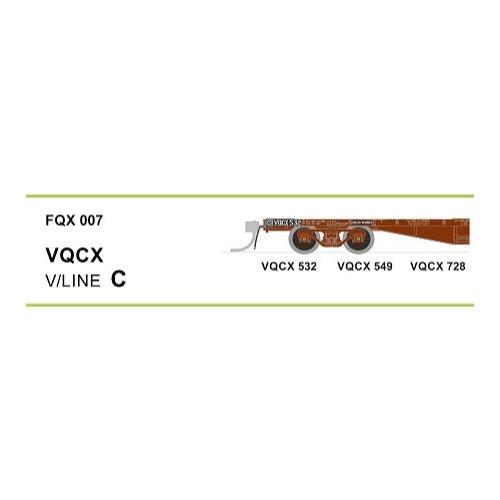
SDS Models HO HO VR OT 10000 Gallon Tank Car 3 Pack B
82.00
$
<h3>10000 Gallon Rail Tank Car Series</h3><p>SDS Models is producing a range of 10 000 gallon rail tank cars based upon a standard VR design 38 foot welded underframe. These HO Gauge models are presented with four unique, oil company specific, tank designs and accurately portrait the prototypical differences between each companies versions to meet their intended requirements. The models cover all major brands used in Victoria with the exception of the Shell Oil Company whose fleet rode on 36 foot riveted underframes.</p><h3>The models are available in triple-packs and are categorised into three groups:</h3><ul>
<li>OT - as delivered in the early 1950s to the early 1960s</li>TW / TWF - 1960s to the late 1970s<li>VTQA / VTQF / VTQY - 1980s and 1990s.</li>
</ul><h3>Model Features:</h3><ul>
<li>Highly detailed Ready-to-Run HO scale model</li>
<li>Injection moulded high quality plastic body</li>
<li>Etched metal walkways</li>
<li>Full brake rigging and underfloor detail</li>
<li>Semi scale metal rimmed wheels</li>
<li>OT bogie, 5’11” wheelbase with 36" diameter wheels.</li>
<li>Genuine Kadee #158 whisker coupler</li>
<li>18” Minimum radius recommended</li>
</ul>
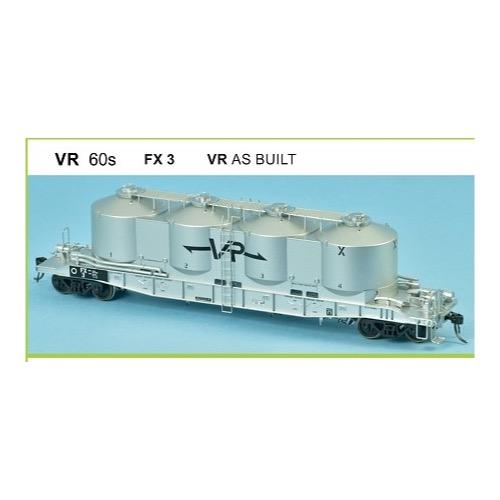
SDS Models VR FX Series 1 1960s FX3 As Built
29.00
$
<h3>FX / VPFX Bulk Flour Wagon</h3><p>17 of these pneumatic discharge wagons were constructed between 1966 and 1971, they were numbered FX1 to 17. The first series FX 1 to 6 were built at Newport Workshops, the second series FX 7 to 17 were built at Ballarat North Workshops. The original series of wagons were designed so that two of the four hoppers were unloaded from each end. The second series differed from the first series by means of a single discharge point, via additional piping and manifold, at each end of the wagon. When the wagons were first delivered they were finished in silver with a small VR logo, later many of the series received flour company branding and some were also repainted white. Later their use was expanded to cover burnt lime (VPLX) and dried locomotive sand (VZGX).</p><p>Whilst coded FX denoting suitability for bogie exchange they were predominantly used on the broad gauge between Albury NSW and Williamstown Pier and Westall, in the mid-80s some ran on standard gauge to Enfield and Canberra.</p><h3>Model Features:</h3><ul>
<li>Highly detailed Ready-to-Run HO scale model</li>
<li>Injection moulded high quality plastic body</li>
<li>Etched metal walkways</li>
<li>Full brake rigging and underfloor detail</li>
<li>Semi scale metal rimmed wheels</li>
<li>Genuine Kadee #158 whisker coupler</li>
<li>18” Minimum radius recommended</li>
</ul>
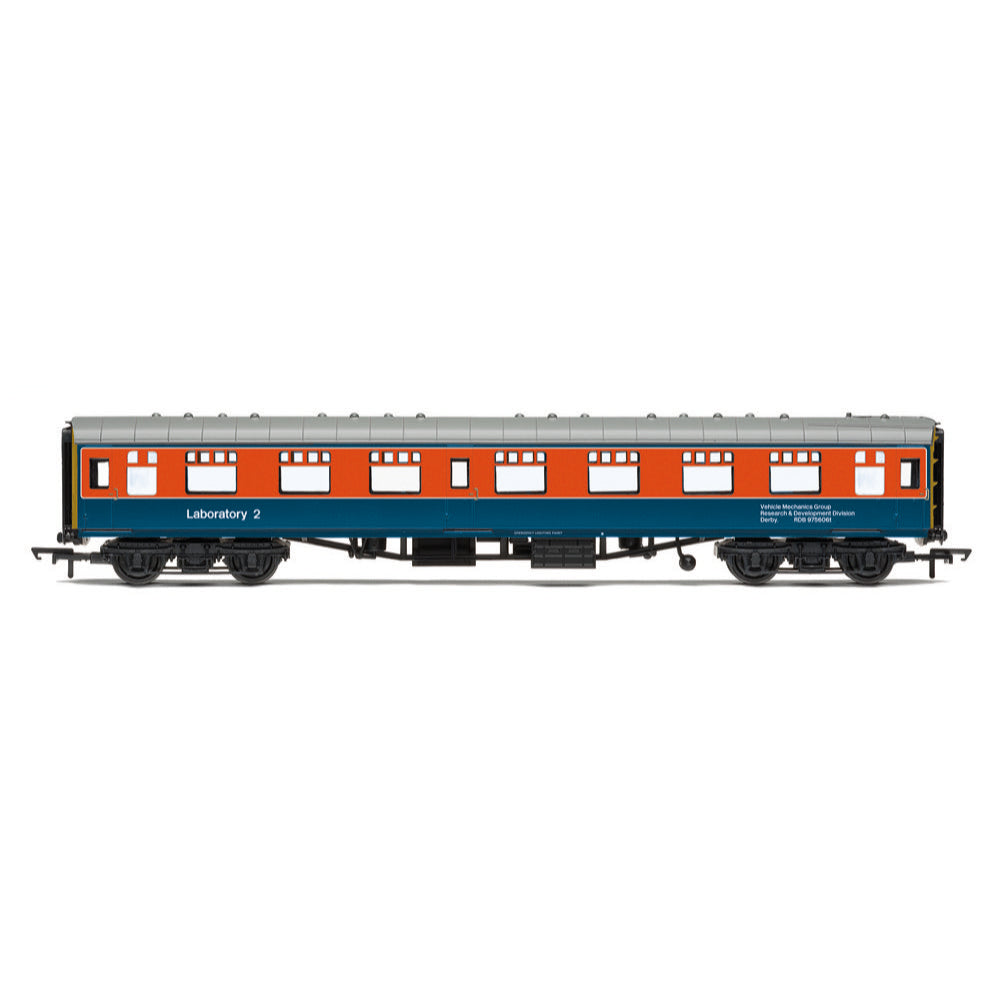
Hornby R40342 OO BR Departmental ex-Mk1 First Open 3068/975606
32.00
$
<p>The first standardised railway carriage design built by British Railways, the Mk 1 Coach introduced in 1951 could be found across Britain's railway network and continued to be produced until 1963, and even later in the form of multiple units and non-passenger stock. Along with being widely deployed, Mk1 Coaches were built in various places including Derby, Doncaster, Eastleigh, Swindon, Wolverton and York.</p><p>Most Mk1 Coaches had 63ft 5in long underframes with 64ft 6in long bodies, although some were built shorter to be used on tighter curves where large overhangs would otherwise have prohibited running. In 1977 a reduction in the number of fatalities on British railways since 1955 was attributed to the introduction of the Mk1 Coaches due to their steel build, strong underframe, and buckeye couplings making them far safer in the event of an accident.</p><p>Mk1 Coaches started to be withdrawn from widescale service in the 1990s, although in some regions, particularly in the south, Mk1 base multiple units continued to be used well into the 2000s. Network Rail continue to use modified Mk1 Coaches for various departmental duties and rail tour operators continue to use Mk1 Coaches on specially organised services.</p><p>The Mk1 BCK is a Mk1 Brake Composite Corridor coach meaning seating is split into compartments connected by a corridor on one side. The coach provided both first- and second-class compartments. Along with passenger seating this coach also houses a compartment containing equipment used to help brake the train.</p><h3>Specifications</h3><ul>
<li>Item Length - Without Packaging (cm): 26.8</li>
<li>Item Height - Without Packaging (cm): 5</li>
<li>Item Width - Without Packaging (cm): 3.5</li>
<li>Item Weight - Without Packaging: 0.13</li>
<li>Item Scale: 1:76 Scale 00 Gauge</li>
<li>Finish: Painted</li>
<li>Colour: Red</li>
<li>Operator: BR Departmental</li>
<li>Designer: BR</li>
<li>Livery: Departmental Red/Blue</li>
<li>Minimum Curve (mm): Radius 2</li>
<li>Number of Parts: 1</li>
</ul>
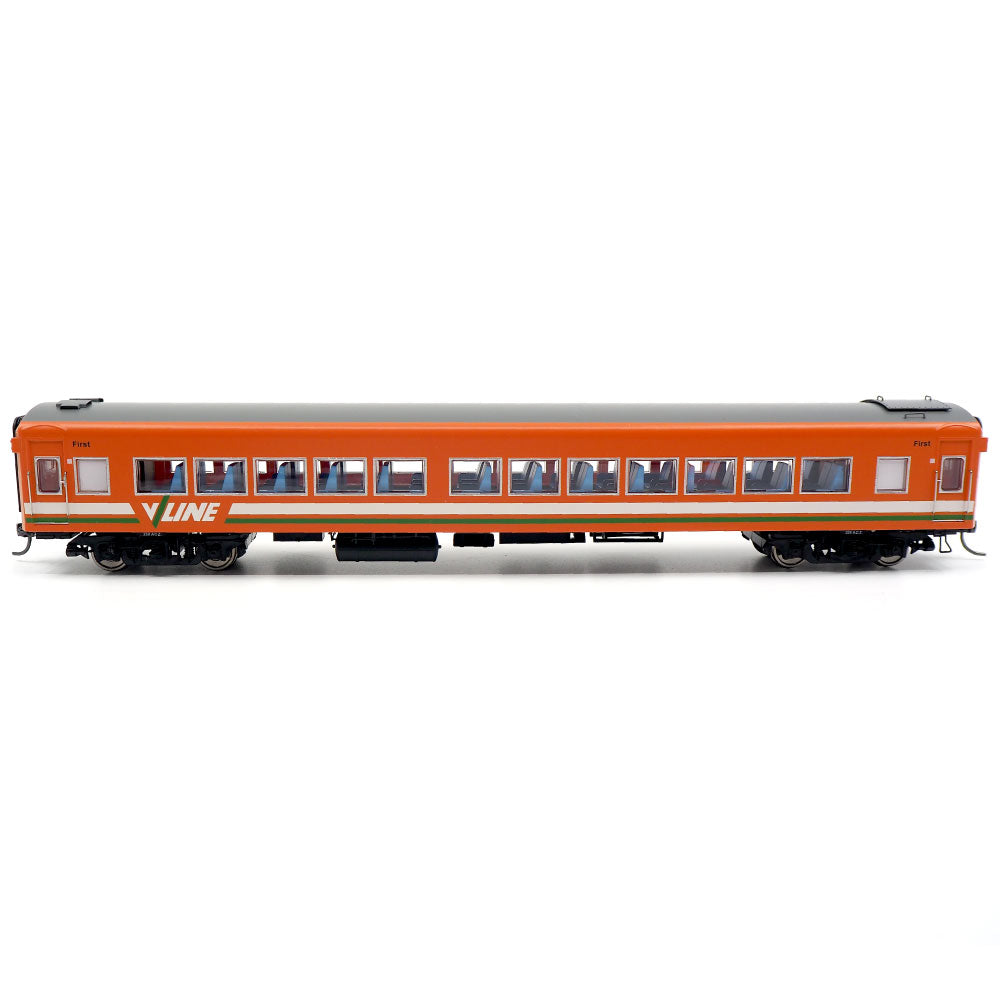
Powerline PC-533B HO BZN 262 V/Line PTV Purple Gem Z Type Carriage Economy
69.00
$
<h3>Powerline PC-533B HO BZN 262 V/Line PTV Purple Gem Z Type Carriage Economy</h3>
<p>The Z type carriages are an air conditioned steel passenger carriage used on the railways of Victoria, Australia. The carriages were constructed by the Victorian Railways from 1957 for use on intrastate services. For most of their service, the Z cars operated as Z sets, however, in the early 1990s most sets were broken up, with carriages merged into N sets. They thus currently run on mixed service with Z sets.</p>
<ul>
<li>Highly detailed</li>
<li>Plastic, resin, and etch metal components</li>
<li>HO Scale</li>
<li>Z-Type Carriage</li>
</ul>
<p><em>ACZ 259 Displayed for illustration</em></p>

SDS Models 758009 HO SAR 700 Class Passenger Cars Pack 9 SAR 751 and 783 2 Car Pack
125.00
$
<p>The South Australian Railways introduced 36 steel bodied country passenger cars between 1936 and 1941. Of these cars the last 24 built, entered service in 1940/41. They were all of a similar external appearance and the same overall length.</p>
<p>16 were coded 700 to 715, these were Second class centre aisle cars. 4 were coded 750 to 753, these were Composite class centre aisle cars. 4 were coded 780 to 783, these First class centre aisle cars.</p>
<p>Originally introduced with frameless full drop windows, they were progressively replaced with half drop chrome plated framed windows from the mid 1950s through to the very early 1960s.</p>
<p>Introduced in Hawthorn green and cream with black roofs up until the mid to late 1960s, when they were progressively repainted into Regal red and Silver to match the newer country stock.</p>
<p>In the early 1970s 4 cars were transferred to standard gauge to work between Broken Hill and Peterborough. Later in the early 1980s several cars were hired to Victorian Railways.</p>
<p>Many 700 series cars also saw service with West Coast Railway in Victoria, Steam Ranger in South Australia, North Rivers Railroad with Ritz Rail in Northern NSW.</p>
<h3>Features</h3>
<ul>
<li>Highly detailed Ready-to-Run 1/87 Scale HO gauge model </li>
<li>18” Minimum radius recommended</li>
<li>Precisely tooled plastic body (ABS)</li>
<li>Genuine Kadee scale head whisker coupler </li>
<li>Separately applied handrails and detail parts</li>
<li>Two body style options: Original 8 vent roof and later 13 vent roof</li>
<li>Two window style options: Original Beclawat frameless full drop window and later Wahner framed half drop window</li>
<li>Three full interior options for each class and with appropriate seat covering colour</li>
</ul>
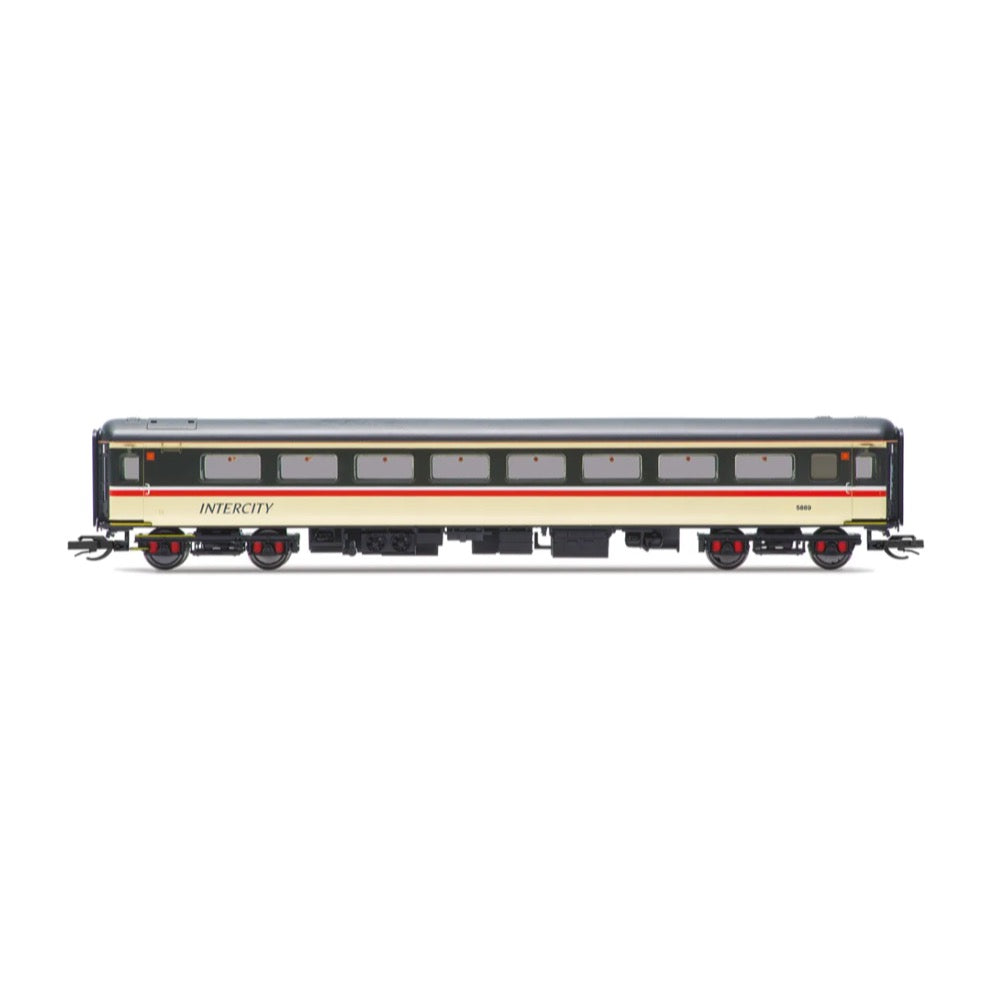
Hornby TT4014 TT BR Intercity Mk2E Tourist Standard Open 5889
27.00
$
<p>The British Rail Mark 1 coaches were not suitable for higher speed rail services, with the Mark 1 coaches being a perfect compliment for steam locomotives which saw themselves being replaced by diesel and electric locomotives as the 1960s progressed. The Mark 2 coach was introduced in 1964 and was all steel. While the Mark 2 was a progression of the Mark 1, the two shared almost no common parts, and only a passing resemblance.</p><p>In service, the Mark 2 coaches were commonly seen in the BR Blue and Grey livery and Network South East colours. The coaches were mainly hauled by larger express diesel and electric locomotives such as the Class 40, 47 and 86. As of 2022, the only Mark 2 coaches still in service are those that are part of the Network rail fleet.</p><p>The Mark 2 E coaches were fitted with luggage racks opposite the toilets at the end of each coach. The toilets themselves were reduced in size from the preceding variants. The gangway doors on Mark 2 E coaches were cream folding doors of a plastic construction.</p><h3>Specifications</h3><ul>
<li>Item Length - Without Packaging (cm): 16.8</li>
<li>Item Height - Without Packaging (cm): 3</li>
<li>Item Width - Without Packaging (cm): 2.2</li>
<li>Item Weight - Without Packaging: 0.04</li>
<li>Item Scale: 1:120 Scale</li>
<li>Finish: Painted</li>
<li>Colour: Multiple</li>
<li>Gauge: TT</li>
<li>Operator: BR</li>
<li>Designer: BR</li>
<li>Livery: Intercity Executive</li>
<li>Minimum Curve (mm): Radius 1</li>
<li>Number of Parts: 1</li>
</ul>
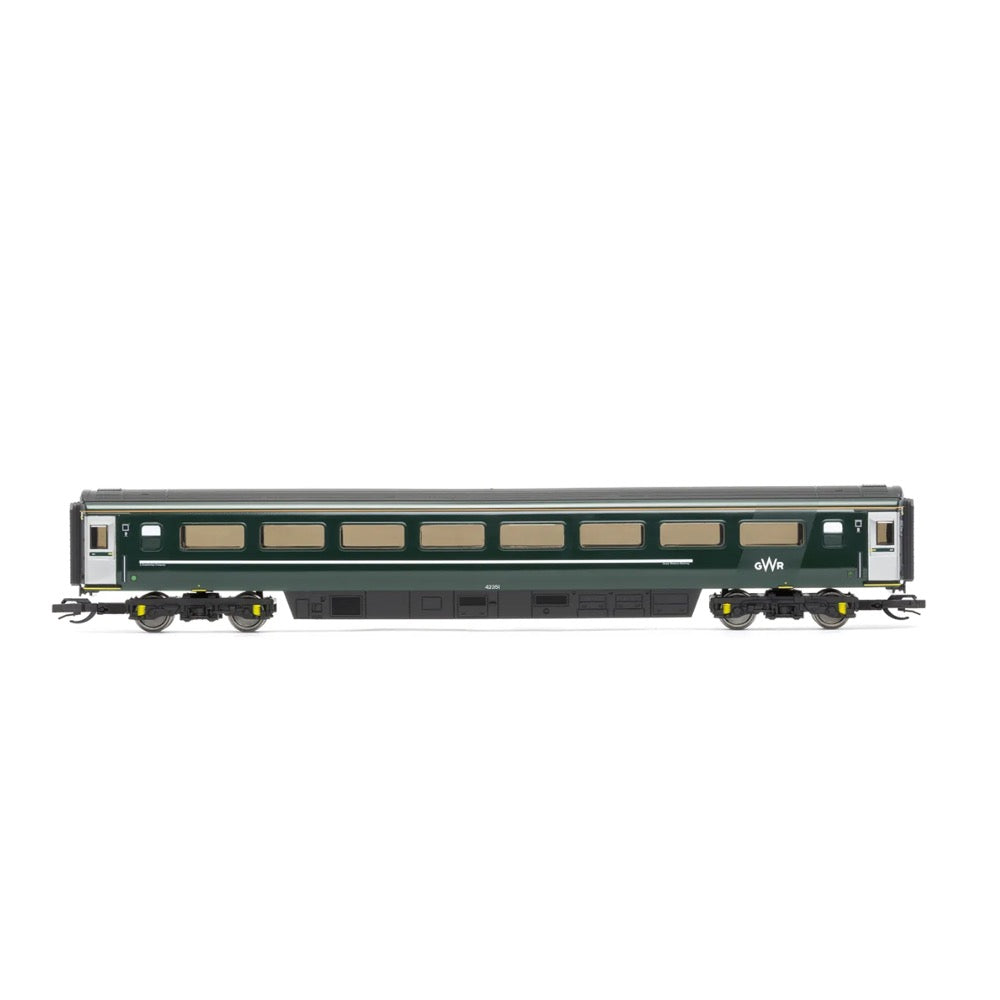
Hornby TT4031B TT GWR Mk3 Trailer Standard Open 42351
27.00
$
<p>In-order to allow running at 125 mph on Britain's Victorian era railways, new rolling stock was needed by British Railways. Significant improvements over the Mk2 included new secondary air suspension between the bogies and the coach body as well as aerodynamic skirting on the underframe.</p>
<p>Mk3 coaches are 75ft (23m) long, enabling far greater capacity than older coaches. Mk3 coaches also incorporate disk brakes and wheel slip protection enabling faster deceleration. The first Mk3 coaches to be delivered were used as part of the HST prototype along with the two Class 41 diesel power cars in 1972. Mk3 coaches entered service in 1975 along with the Class 43 forming the iconic InterCity 125 trainset. After the HST Mk3 coach variant was introduced, further Mk3 coaches were introduced to the West Coast Mainline for use as part of locomotive hauled trains. Whilst Mk3 stock is standard for HST units, the standard locomotive hauled stock is Mk3a. Mk3a stock differs from Mk3 stock due to the inclusion of buffers as well as a different electrical system that uses motor generator units in each coach to power air conditioning and other ancillaries Mk3a stock was built until 1984, before 3B stock with improved seating and lighting was built from 1985 to 1988.</p>
<p>Some 40 years after introduction the Mark 3 coaches and Class 43 units are still in service. One of the most prominent users of the train is the GWR, with their Class 255 Castle sets made up of two 43 units and four coaches. These units were refurbished between 2018 and 2020 to make 12 trains, with the first being introduced in March 2019.</p>
<h3>Specification</h3>
<ul>
<li>Item Length - Without Packaging (cm): 19</li>
<li>Item Height - Without Packaging (cm): 2.2</li>
<li>Item Width - Without Packaging (cm): 2</li>
<li>Item Weight - Without Packaging: 0.05</li>
<li>Item Scale: 1:120 Scale</li>
<li>Finish: Painted</li>
<li>Colour: Green</li>
<li>Gauge: TT</li>
<li>Operator: GWR</li>
<li>Designer: BR</li>
<li>Livery: GWR Green</li>
<li>Minimum Curve (mm): Radius 1</li>
<li>Number of Parts: 1</li>
</ul>

Hornby R40196 OO Avanti West Coast Pendolino Pantograph Standard Buffet (PTSRMB) Pride Livery
$43.00

Hornby R40196 OO Avanti West Coast Pendolino Pantograph Standard Buffet (PTSRMB) Pride Livery
43.00
$
<p>On the 25th of August 2020 Avanti West Coast unveiled a new livery for one of its train-sets. Billed as the biggest Pride flag the UK has seen on the side of a train, the new livery wraps the full length of the 11 carriages in the Progressive Pride flag colours. The first service of this newly liveried train was staffed by a LGBTQ+ crew with the train filled with literature, stories and colourful posters featuring Pride related information as well as fun facts during the onboard announcements.</p>
<p>This coach can be used to expand set R30081 to a 9-car set.</p>
<h3>Specifications</h3>
<ul>
<li>Item Length - Without Packaging (cm): 33.5</li>
<li>Item Height - Without Packaging (cm): 5</li>
<li>Item Width - Without Packaging (cm): 3.6</li>
<li>Item Weight - Without Packaging: 0.2</li>
<li>Item Scale: 1:76 Scale 00 Gauge</li>
<li>License: No</li>
<li>Finish: Painted</li>
<li>Colour: Mixed</li>
<li>Gauge: OO</li>
<li>Operator: Avanti West Coast</li>
<li>Designer: Alstom</li>
<li>Livery: Avanti Pride</li>
<li>Minimum Curve (mm): Radius 2</li>
<li>Number of Parts: 1</li>
</ul>
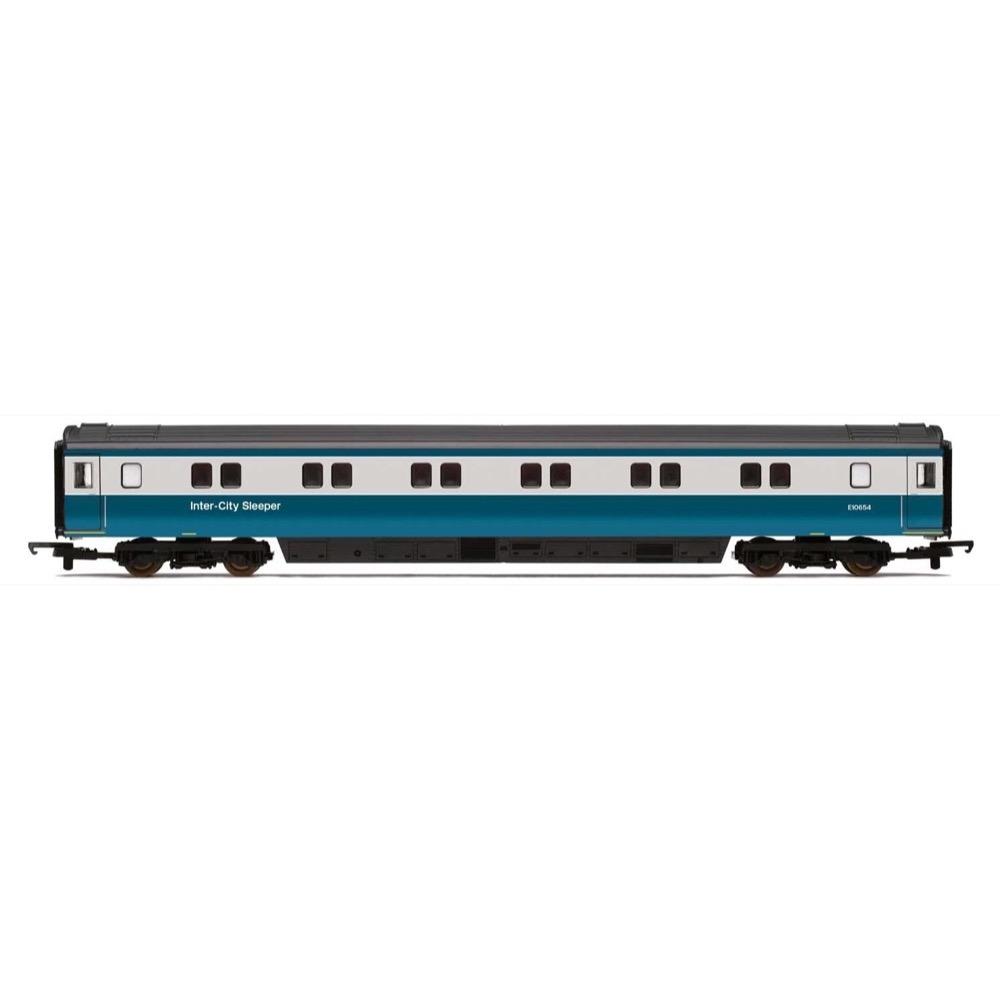
Hornby R40038A OO BR Mk3 Sleeper Coach E10611
40.00
$
<p>In-order to allow running at 125 mph on Britain's Victorian era railways, new rolling stock was needed by British Railways. Significant improvements over the Mk2 included new secondary air suspension between the bogies and the coach body as well as aerodynamic skirting on the underframe. Mk3 coaches are 75ft (23m) long enabling far greater capacity than older coaches. Mk3 coaches also incorporate disk breaks and wheel slip protection enabling faster deceleration. The first Mk3 coaches to be delivered were used as part of the HST prototype along with the two Class 41 diesel power cars in 1972.</p>
<p>Mk3 coaches entered service in 1975 along with the Class 43 forming the iconic InterCity 125 trainset. After the HST Mk3 coach variant was introduced, further Mk3 coaches were introduced to the West Coast Mainline (WCML) for use as part of locomotive hauled trains. Whilst Mk3 stock is standard for HST units, the standard locomotive hauled stock is Mk3a. Mk3a stock differs from Mk3 stock due to the inclusion of buffers as well as a different electrical system that uses motor generator units in each coach to power air conditioning and other ancillaries Mk3a stock was built until 1984, before 3B stock with improved seating and lighting was built from 1985 to 1988.</p>
<p>In 1979 British Rail ordered 236 Mk3a sleeper carriages to replace an ageing fleet of Mark 1 sleeper cars built to various designs and which dated from the late 1950s to early 1960s. This order was later reduced to 207 carriages. East coast sleeper services between London and Scotland ceased in May 1988, but the sleeper services on the WCML from Euston remined. Mk3 sleeper vehicles remain in use on the Great Western Railway's Night Riviera from London Paddington to Penzance in Cornwall having had their interiors refurbished.</p>
<h3>Specification</h3>
<ul>
<li>Item Length - Without Packaging (cm): 30.3</li>
<li>Item Height - Without Packaging (cm): 5</li>
<li>Item Width - Without Packaging (cm): 3.5</li>
<li>Item Weight - Without Packaging: 0.19</li>
<li>Item Scale: 1:76 Scale 00 Gauge</li>
<li>License: No</li>
<li>Finish: Painted</li>
<li>Colour: Blue</li>
<li>Gauge: OO</li>
<li>Operator: BR</li>
<li>Designer: BREL</li>
<li>Livery: BR Corporate Blue</li>
<li>Minimum Curve (mm): Radius 2</li>
<li>Number of Parts: 1</li>
<li>Motor: 5 pole skew wound</li>
</ul>
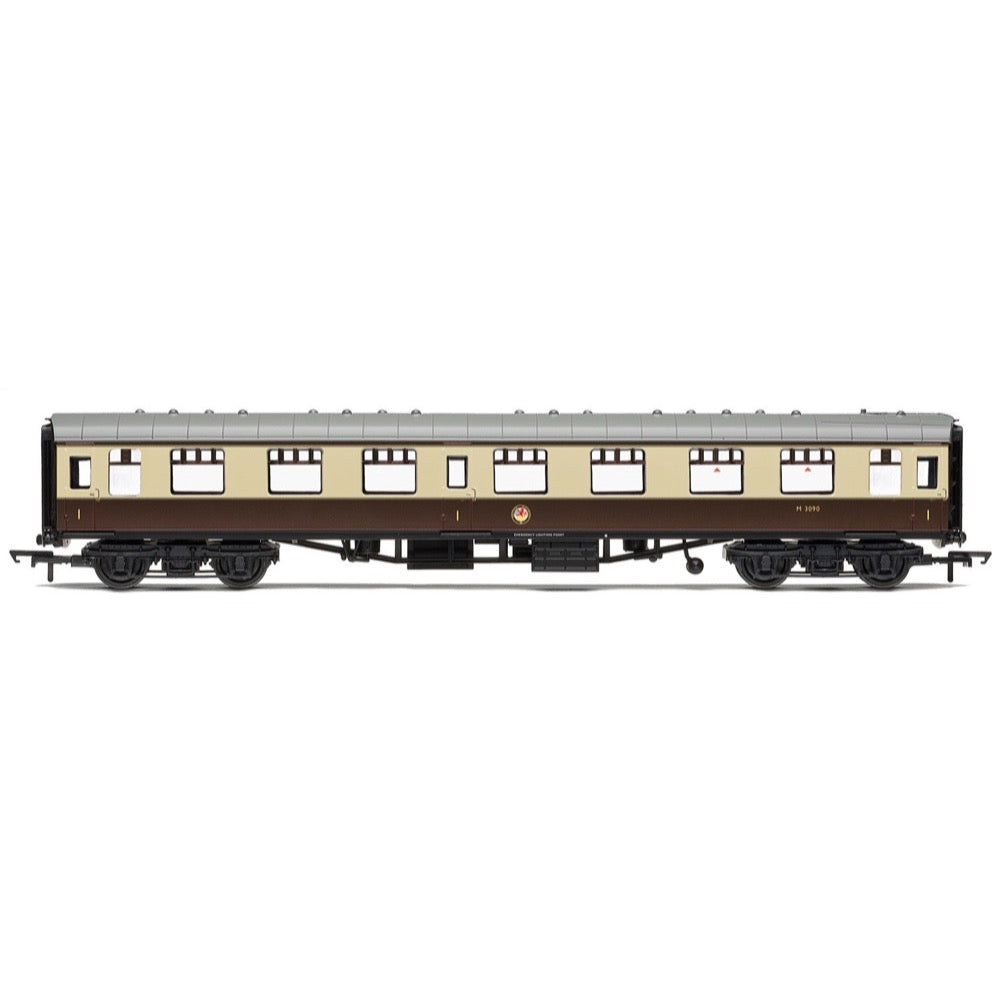
Hornby R4824 OO BR Mk1 First Open W3090 Era 5
42.00
$
<p>The BR, Mk1 First Open, W3090 - Era 5, is a creation by British Railways and great choice for any railway enthusiast, whether your just starting out or have been so for years.</p>
<h3>Specification</h3>
<ul>
<li>Colour: Chocolate</li>
<li>Finish: Painted</li>
<li>Gauge: OO</li>
<li>Livery: WR Chocolate & Cream</li>
<li>Coupling: NEM / Tension lock</li>
<li>Minimum radius curve: Radius 2</li>
<li>Operator: BR</li>
<li>Designer: BR</li>
</ul>


